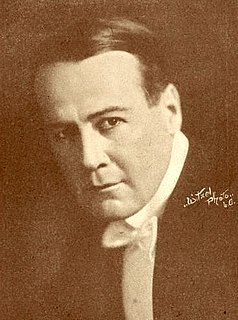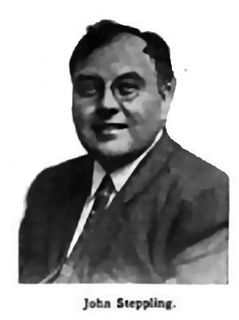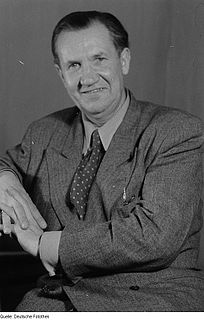This page is based on this
Wikipedia article Text is available under the
CC BY-SA 4.0 license; additional terms may apply.
Images, videos and audio are available under their respective licenses.

Ben Lyon was an American film actor and a studio executive at 20th Century Fox, who later acted in British radio, films and TV.

Wendell Phillips Smalley was an American silent film director and actor.

Clarence G. Badger was an American film director of feature films in the 1910s, 1920s and 1930s. His films include It and Red Hair, more than a dozen features and shorts starring Will Rogers, and two features starring Raymond Griffith, Paths to Paradise and Hands Up!
Benjamin Stoloff was an American film director and producer. He began his career as a short film comedy director and gradually moved into feature film directing and production later in his career.

John Steppling was a German-American silent film actor.
Arthur Millett was an early American motion picture actor whose career was at its height in the silent film era.

William Scott was an American actor of the silent era. He appeared in 90 films between 1913 and 1934. He was born in Minneapolis, Minnesota and died in Los Angeles, California.

Matthew Betz was an American film actor.

Mary Josephine Dunn was an American stage and film actress of the 1920s and 1930s.

Robert W. Frazer was an American actor who appeared in some 224 shorts and films from the 1910s. He began in films with the Eclair company which released through Universal Pictures.

Oreste Bilancia was an Italian film actor.
Gabriel Gabrio was a French stage and film actor whose career began in cinema in the silent film era of the 1920s and spanned more than two decades. Gabrio is possibly best recalled for his roles as Jean Valjean in the 1925 Henri Fescourt-directed adaptation of Victor Hugo's Les Misérables, Cesare Borgia in the 1935 Abel Gance-directed biopic Lucrèce Borgia and as Carlos in the 1937 Julien Duvivier-directed gangster film Pépé le Moko, opposite Jean Gabin.

Hans Brausewetter was a German film actor of the silent era. He appeared in 135 films between 1922 and 1945. He appeared in the 1923 film The Treasure, which was directed by Georg Wilhelm Pabst. He was killed in Berlin during the last days of the Second World War by the blast of a bomb.

Max Neufeld was an Austrian film director, actor and screenwriter. He directed 70 films between 1919 and 1957. He directed the 1934 film The Song of the Sun, which starred Vittorio De Sica.

Fritz Kampers was a German film actor. He appeared in 261 films between 1913 and 1950.

Louis Natheaux was an American film actor. He appeared in more than eighty films between 1919 and 1942.
Archie Marshek was an American film editor whose 44-year career spanned six decades.
Charles Kenneth Thomson was an American character actor active during the silent and early sound film eras.
Trem Carr (1891–1946) was an American film producer, closely associated with the low-budget filmmaking of Poverty Row. In 1931 he co-founded Monogram Pictures, which developed into one of the leading specialist producers of B pictures in Hollywood. In 1935 the company was merged into the newly-created Republic Pictures, but a year later Carr broke away and reestablished Monogram as an independent company. Following his death in 1946, Monogram was changed its name to Allied Artists and produced films made on higher budgets.














